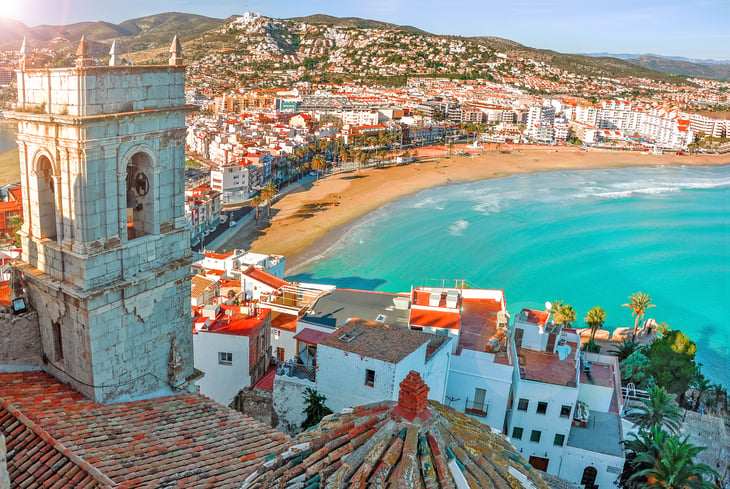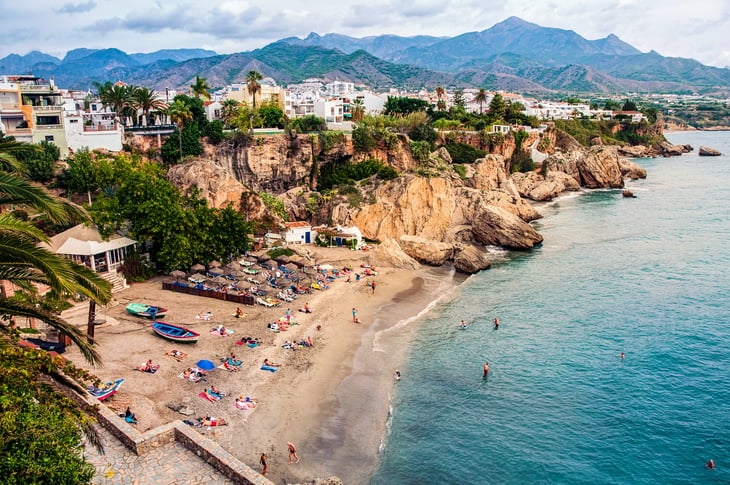
Editor's Note: This story originally appeared on Live and Invest Overseas.
Spain is the world’s second most visited country after France.
It has 15% of the United States’ population… yet it receives almost 84 million tourists every year — 4 million more than the States.
Spain gets over seven times more tourists per capita. This is impressive for a country with a population of 47 million, and it’s what makes tourism a 92-billion-euro industry in Spain today.
It’s recognized for its impressive natural and cultural heritage, excellent tourism and travel infrastructure, general safety, and price competitiveness.
Spain’s enduring allure

Spain’s allure is enduring… but it isn’t new. For over 70 years, it has been the playground of choice for European and American vacationers.
You could argue that Spain has been welcoming visitors from across the globe for 2,500 years.
This country in western Europe has an area of slightly over 500,000 square kilometers.
It occupies most of the Iberian Peninsula and stretches from the Pyrenees Mountains south to the Straits of Gibraltar.
Great coastline, climate, and more

Spain is blessed with 8,000 kilometers of coastline on the Atlantic and Mediterranean, and it has an unrivaled 681 Blue Flag beaches. It has a dry, warm climate that supports a year-round vacation lifestyle.
A few reasons for its enduring popularity are its excellent weather, its rich, laid-back, and welcoming culture, and the diverse lifestyle options on offer for retirees, remote workers, young families, and party lovers.
Property is cheaper than in most parts of Western Europe. Especially outside major cities and away from the ocean you can find great value, but you can find great deals in bigger cities if you know where to look, as well.
Coastal property

For decades, expat buyers have fueled Spain’s coastal property market. Starting in the 1960s, vacation condo blocks began springing up across Spain’s coastline.
Back then, obtaining planning permission was more of an idea than a practice. Today, some stretches of the Spanish coast are left with old concrete hulks of buildings that are neither pleasing to the eye nor easy to live in.
But a lot has changed since the 1960s. Today, you can find high-quality developments on or close to the beaches that offer truly inspiring living options.
Foreign buyers make up to 19% of all property purchasers, which reduces the local property risk as foreigners are less dependent on the local economy for their income.
Property prices after 2008

Because of Spain’s enduring popularity, overreaching speculation, and overleveraging during the early 2000s property boom, Spain was badly hit by the post-2008 property crash.
Property prices dropped by almost 40% from 2008 to 2013. But because it’s the world’s tourism and retiree destination of choice, the property market began to recover in 2013 and has shown reliable gains since then.
Prices still haven’t reached the overheated bubble heights of the 2008 crash. Prices stagnated and sales slumped during the pandemic, but when travel reopened, sales jumped 38% in 2021.
Today, the average price per square meter in Spain is 1,999 euros. This price is an average across a huge market.
Property prices can range from as low as 600 euros per square meter in the interior for local-style accommodation to above 3,000 euros in some areas of the overbuilt tourist traps like the Costa Del Sol.
Residency and taxes in Spain

It’s important to note that if you reside for more than three months in a calendar year in the country, you have a legal obligation to apply for residency.
If you spend more than six months in Spain, then you become a Spanish tax resident. You will be paying taxes in Spain for your worldwide assets and income.
If you are considering relocating to this country, you will have to plan your arrival dates carefully as this can have different effects on the taxes you pay.
For example, selling your main residence in the United States in the same year you become a Spanish tax resident can make you liable to pay capital gains tax in Spain on that sale in the U.S. It’s important to plan your move carefully and consider the tax implications.





Add a Comment
Our Policy: We welcome relevant and respectful comments in order to foster healthy and informative discussions. All other comments may be removed. Comments with links are automatically held for moderation.